Speed and precision for your battery production
From the cell to module production and insertion of the battery systems: Festo has suitable automation solutions for the entire battery production process, whether pneumatic, electric or cross-technology. In battery production, high throughput and repeatability are just as important as cost-effective solutions. This applies to many different process steps, from conveying, feeding and controlling aggressive media to precise parts handling and force-controlled press applications.
Festo product portfolio for battery production
Battery production is an extremely sensitive process. Every step, whether processing, transporting or quality inspection, requires a clean production environment.
Find out how to produce safe batteries with non-ferrous metal-free automation components in our 'Products for battery production' catalog.
Automation solutions for your applications
Precisely controlled degassing and welding
During the formation process, gas builds up in the battery cell. This gas must be extracted. This is done by piercing the battery cell using a hollow lance and evacuating the gas until electrolyte is being drawn off too. The system then switches over and pumps the electrolyte back into the battery cell, then the remaining quantity of gas is removed. Handling systems from Festo help with loading the battery cells onto the workpiece carriers for insertion into the process camera and then unloading them again afterwards.
Suitable products for degassing and welding of the battery cell
Augmented Reality Animation (only available in English)
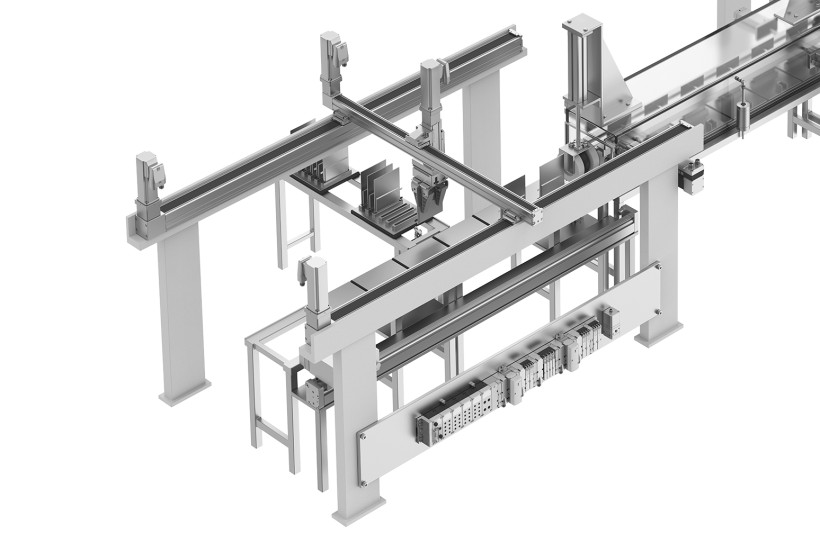
Secure cutting and clamping with WebCatcher
The purpose of cutting is to cut a wide strip of electrode foil into several narrower strips. This cutting process can be done thermally using laser cutting or carried out mechanically using a rolling cutter. To extend the cutter’s service life, a cooling liquid is sprayed directly onto the blade during this process. The liquid must be dispensed in a controlled way and in very small quantities. The dispense head from Festo is perfect for this task. If the machine stops during the cutting process, the electrode foils are secured using so-called web catchers. Fast-switching valves and cylinders are used to ensure a fast response time and speed.
Suitable products for cutting and clamping the electrode foils
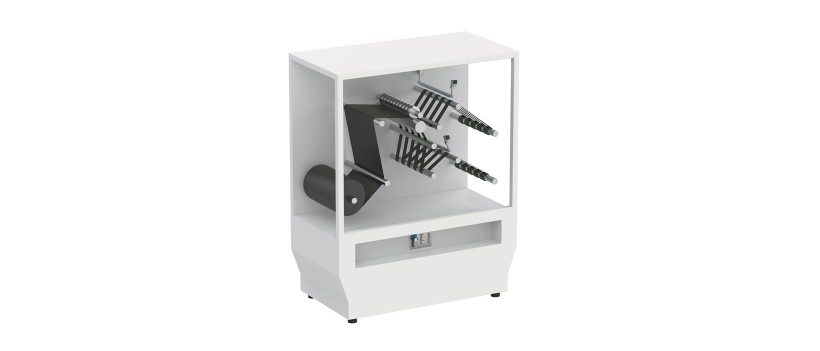
High-speed stacking
A stacking process is used in the production of pouch cells. In the stacking process, the electrode sheets are stacked in a repeating cycle of anode, separator, cathode, separator, etc. Festo offers complete electric handling systems for this particular process step, consisting of axis kinematics, motors and servo drives. All the components are perfectly matched. The very high speeds required for maximum output are provided by the fast-switching valve with switching frequencies of up to 500 Hz. The vacuum needed to pick up and transfer the electrode sheets is generated using vacuum generators.
Suitable products for stacking the electrode sheets
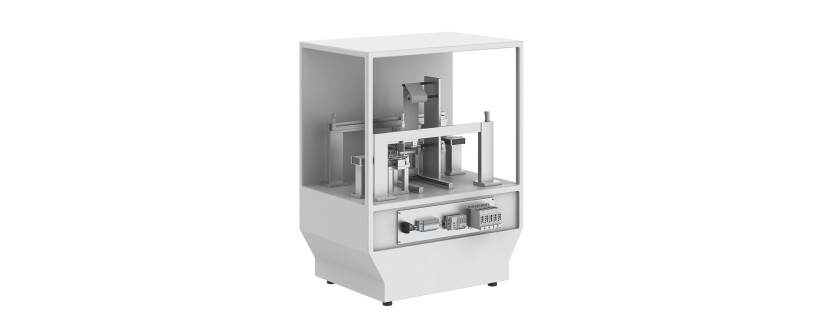
Safe and precise filling with electrolyte
Once the cell stack or jelly roll has been inserted in the battery housing, the battery cell can be filled with electrolyte. The electrolyte is dosed using the pinch valve. It is actuated via individual valves or valve terminals. Since electrolyte reacts with water and forms hydrofluoric acid, the ambient air must be very dry when filling the battery cells. To ensure this is the case, the air is continuously evacuated and removed from the machine cell. The vacuum required to do this is generated centrally via a vacuum pump. Regulation is carried out by a system of pinch valves, valve terminals and pressure sensors.
Suitable products for electrolyte filling
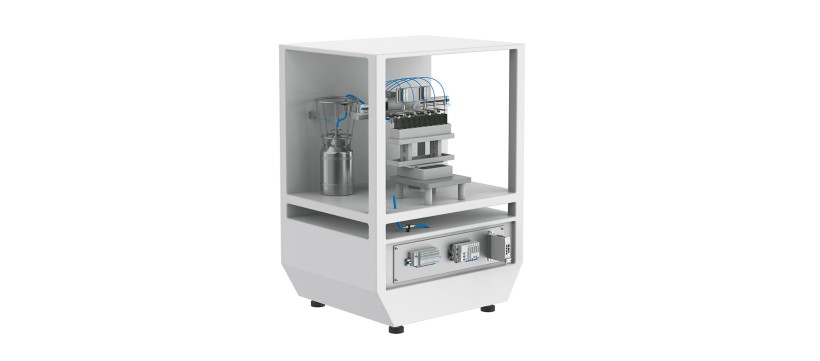
What are the consider all the important aspects when starting battery cell production?
Discover 10 tips for selecting the right automation components for efficient production of safe batteries.
Download the checklist nowBuy now in our Online Shop
Mini slide DGST
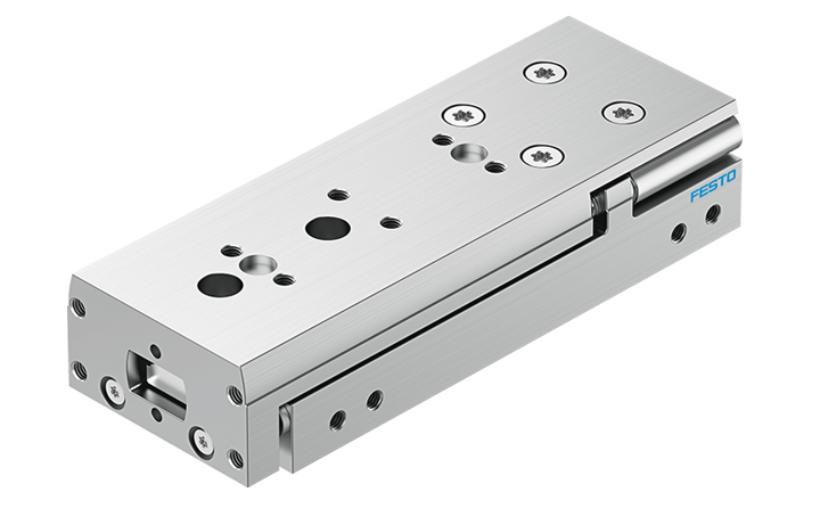
Compact, yet big on performance and precision
A real space-saver: the compact and short slide unit features integrated cushioning components and sensor mounts. The mini slide delivers maximum precision across the entire stroke thanks to the combination of yoke and slide in one part and the recirculating ball bearing guide underneath it. The large range of cushioning options together with the use of position transmitters opens up numerous applications.
Guided drive DFM
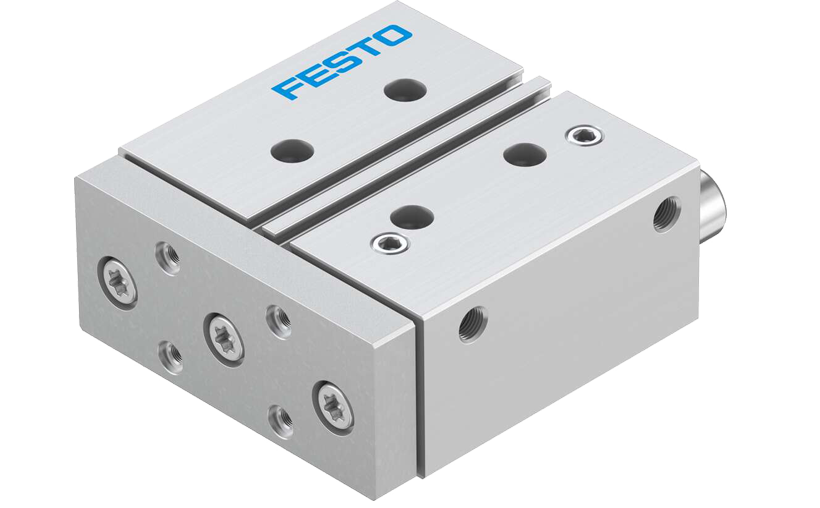
A true guiding light!
Robustness is the name of the game with the DFM. This impressive guided drive has the best price/performance ratio in the market and offers optimum guide characteristics, sturdiness and flexibility. It is reliable, adaptable and resilient – even with high torques. The combination of linear drive and powerful guide in a compact unit means that the DFM can reliably move high loads, even in tight spaces.
Buy now
Compact cylinders ADN-S and ADN-ISO
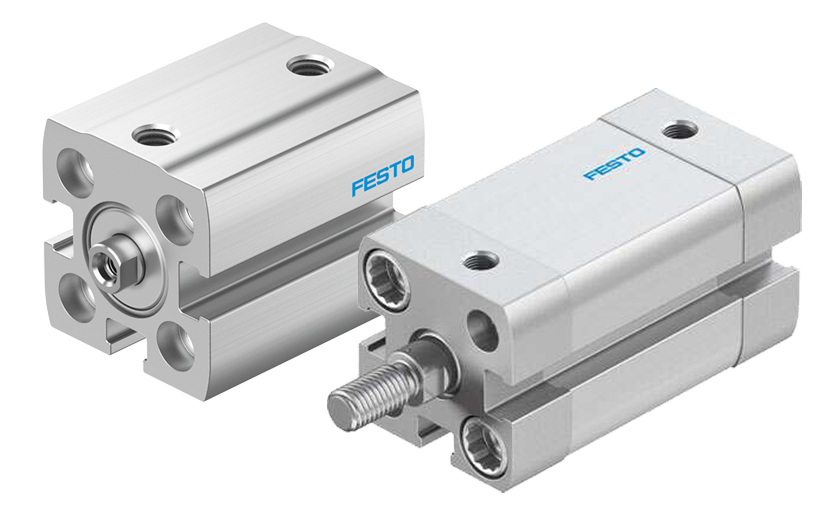
The ultra compact short stroke cylinder
ISO standards-based ADN or the ultra compact short stroke ADN-S? The compact cylinder ADN is always a solid choice when it comes to performance and compact dimensions. When space is tight, the ADN-S, our counterpart to the standards based cylinder, is an even more compact variant for even greater space savings. Both offer integrated magnet for position sensing and the choice of male or female rod threads.
Round cylinder DSNU-S and DSNU-ISO

Round cylinders ideal for small spaces
ISO standards-based DSNU or the smaller and even slimmer DSNU-S? The round cylinder DSNU is always a solid choice when it comes to performance and compact dimensions. Its universal variants make it ideal in applications where low friction, chemical resistance or corrosion resistance are required.
Success story: future battery production
Electric vehicles are setting a trend. However, their success depends on high-performance and cost-effective batteries. In the UK, the pilot project AMPLiFII at WMG is laying the foundations of a new generation of traction batteries. The project includes innovative automation technology from Horizon Instruments with a Festo pick & place solution.
FAQs about products for battery cell production
What are the requirements on products in battery cell production?
The manufacture of battery cells is a highly sensitive process with a wide variety of requirements. Contaminants such as copper, zinc or electrically conductive or non-conductive particles can reduce the quality of the batteries or render them unusable.
As there is no legal standard, so Festo evaluates its product design according to common criteria and on the basis of detailed customer requirements. To ensure the safety of battery cell production, cleanroom products and products with restrictions on non-ferrous metals such as copper and zinc are often required.
In addition, the production environment plays an important role in the manufacture of lithium-ion batteries. Products in cell production are often exposed to a dry room environment with dew points as low as -80 °C.
How does Festo define the restrictions regarding non-ferrous metals (copper, zinc, nickel)?
Depending on the electrolyte and electrode material, copper, zinc and nickel can act as interfering particles during the production of lithium-ion batteries. Festo has therefore defined criteria for its product development with regard to restrictions on copper, zinc and nickel: metallic materials with main constituents that are either copper, zinc or nickel are excluded from use. Irrespective of this, however, some alloys require additions of these elements within the metal matrix.
Exemptions from the material restrictions regarding copper, zinc and nickel:
- Nickel in ferrous metals
- Chemical nickel plating without copper sub-layer
- Inert chemical compounds, such as oxides and sulfides
- Printed circuit boards, electrical plug connectors, cables, wires and coils
Which products meet the restrictions defined by Festo with regard to copper, zinc and nickel?
Many standard products from Festo already meet the restrictions defined by Festo with regard to copper, zinc and nickel. You will find these marked in the "Automation solutions for battery production" brochure and in the overview in our Online Shop.
Products for battery cell production
There are special variants of products that are frequently required for cell production and that do not meet Festo's definition as a standard product.
These variants are marked with "F1A" in the ident code and can also be found in the brochure and in the product overview.
Which Festo products are suitable for dry room environments?
A dry room environment with a pressure dew point of -50 °C to sometimes -80 °C is typical for lithium-ion cell production. The dry-room environment inhibits the hydrophilic tendency of many electrolytes and prevents the risk of harmful hydrofluoric acid forming through reaction with humidity in the ambient air.
Standard products from Festo have proven their worth in dry room applications such as battery production. Festo products can be used in a dew point environment of -80 °C or even below: None of Festo's approx. 60 different greases contains water as part of the lubricant's formulation.
It is therefore not possible for any of these greases to dry out on contact with even very dry air. Furthermore, no of Festo's greases require moisture, quite apart from liquid water, to achieve or maintain their lubricating properties.
What solutions does Festo offer for the cleanroom?
You can use Festo cylinders, valves, grippers and drives, all handling, vacuum and compressed air systems, sensors, filters, compressed air regulators and fittings from more than 80 product ranges in ISO class 7 cleanroom environments. Most are suitable for use in classes 6 and 5, and many can even be used in class 4 environments. We can also provide customized special solutions.
All our cleanroom products are classified into cleanroom classes in accordance with ISO 14664. It’s best to check the exact requirements with our specialists, because particle emissions depend on the application in question. That’s the fastest way to find a workable solution.
Expertise to download
For the emerging market of electric vehicles, battery production is the critical factor. Be part of the move to unlock the full potential—with automation technology from Festo.
Brochure to download
The race for efficient systems is already well under way. Our observations indicate that efficient automation can considerably reduce battery production costs.
Why not share with your colleagues how Festo can contribute in this area.